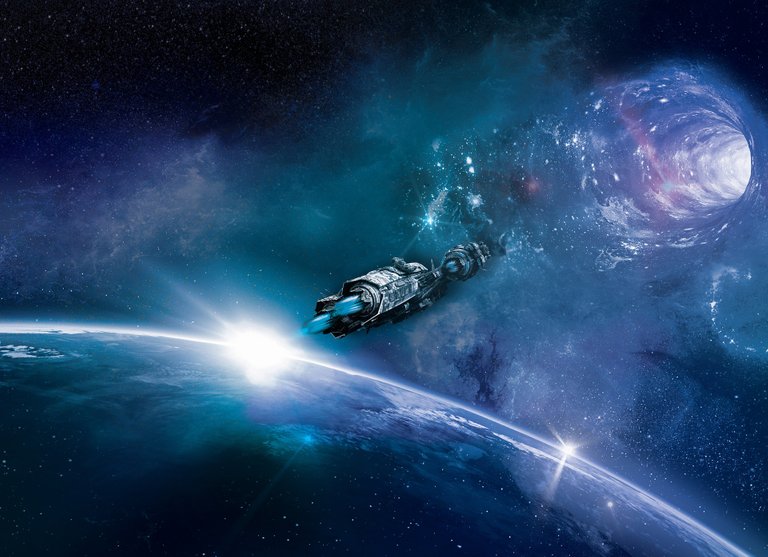How To Find A Wormhole?
In the center of our galaxy we have a supermassive black hole. Or is it a supermassive wormhole? Scientists propose a way which could answer that question. It would be a lot of work but more than worth it if we discover a natural wormhole.

Image by deselect from Pixabay
- Be also sure to check out my other posts and follow me @kralizec and subscribe to my Youtube channel at Kralizec Gaming Youtube Channel
A wormhole is an incredible thing. A shortcut through space-time which allows you to send a message or even transport matter over incredible distances in a very short time. And in principle doesn't even go against Einstein's general relativity. It would be the ultimate technology but so far they can be found only in science fiction and scientists are only proving that they should be inherently unstable.
On the other hand, wormholes are so fascinating that physicists keep playing with the equations and a few are hoping that wormholes may one day be stabilized. And some even want to find natural wormholes out there in the Universe. And one new study claims that all you need is a supermassive black hole, stars that orbit it and a few devices for very precise measurements and calculations.
De-Chang Dai from the Yangzhou University and Dejan Stojkovic from the University of Buffalo are proposing a very simple way how to figure out whether we have a black hole or a wormhole at the center of our galaxy. Since a wormhole connects two places in space-time objects on one side of the wormhole should gravitationally affect objects at the other side.
The center of our galaxy has a supermassive black hole named Sagittarius A. Many different stars orbit it and they are already being observed many physicists and astronomers to study gravity and general relativity. And now these stars could become good objects for a detective search for the true nature of Sagittarius A. If Sagittarius A* is a supermassive wormhole and other stars are orbiting on the other end the stars on our side should be affected.
Dai and Stojkovic think suppose that if we map the movement of stars on orbits near Sagittarius A* we may be capable of finding out if they are being affected by something from the other side. But it will not be hard. Sagittarius A* is one heck of a baby with a mass of over 4 million Suns. Its gravity truly reigns in its vicinity. To separate its gravitational effects from the effects of stars will be very hard. And if the wormhole itself would be behind the event horizon there is a chance that the gravitational effects would be completely indistinguishable from the gravitational effects of the black hole itself.
While I think that having your own StarGate – yes, I love that series – would be awesome, most scientists are more than a little pessimistic when it comes to using wormholes to travel across the Universe just finding a naturally occurring one would be awesome. And I wish the scientists luck.
Sources:
- If you like the content I’m producing about science maybe you will like the content I produce about gaming as well! Be sure to check out my other posts!
@tipu curate :)
Upvoted 👌 (Mana: 0/4)